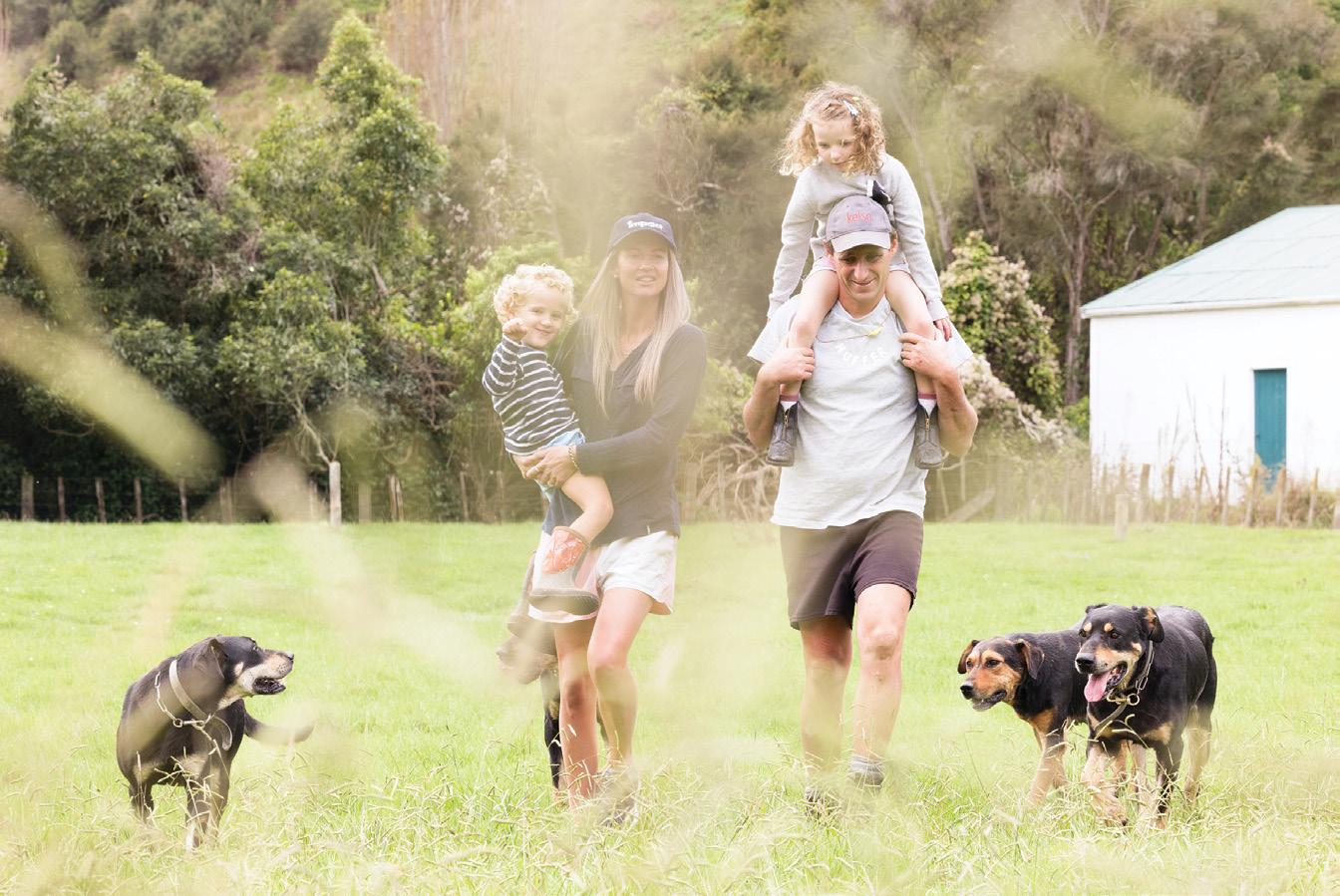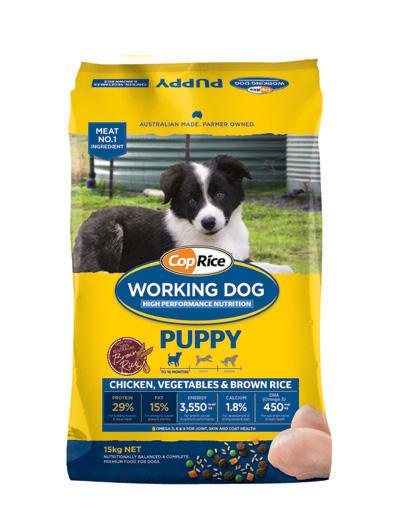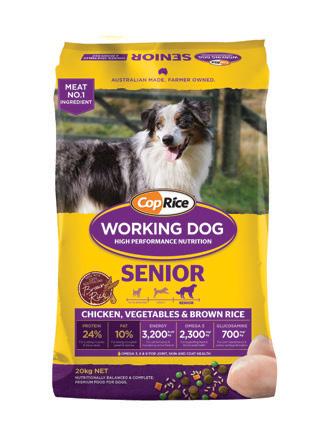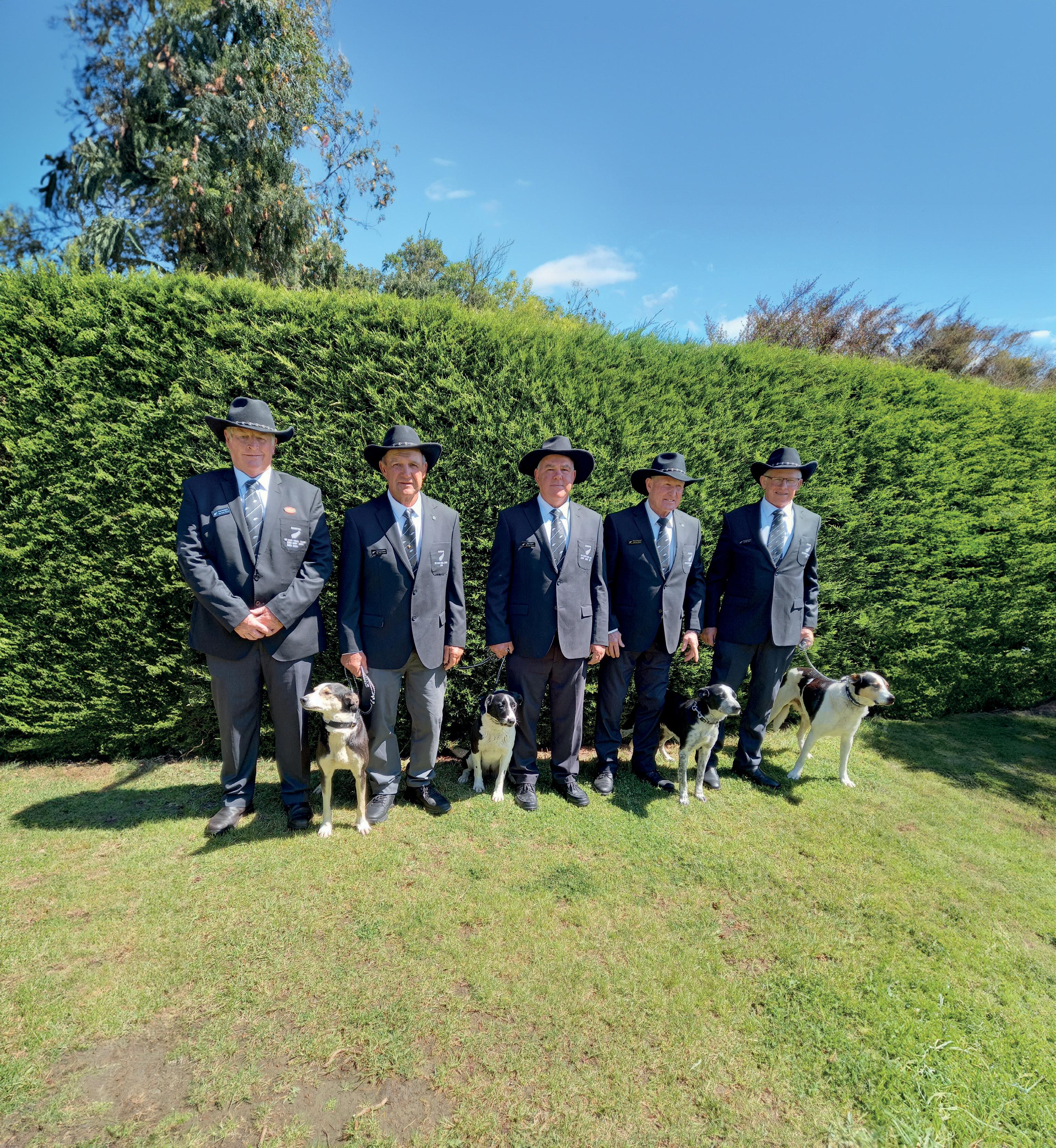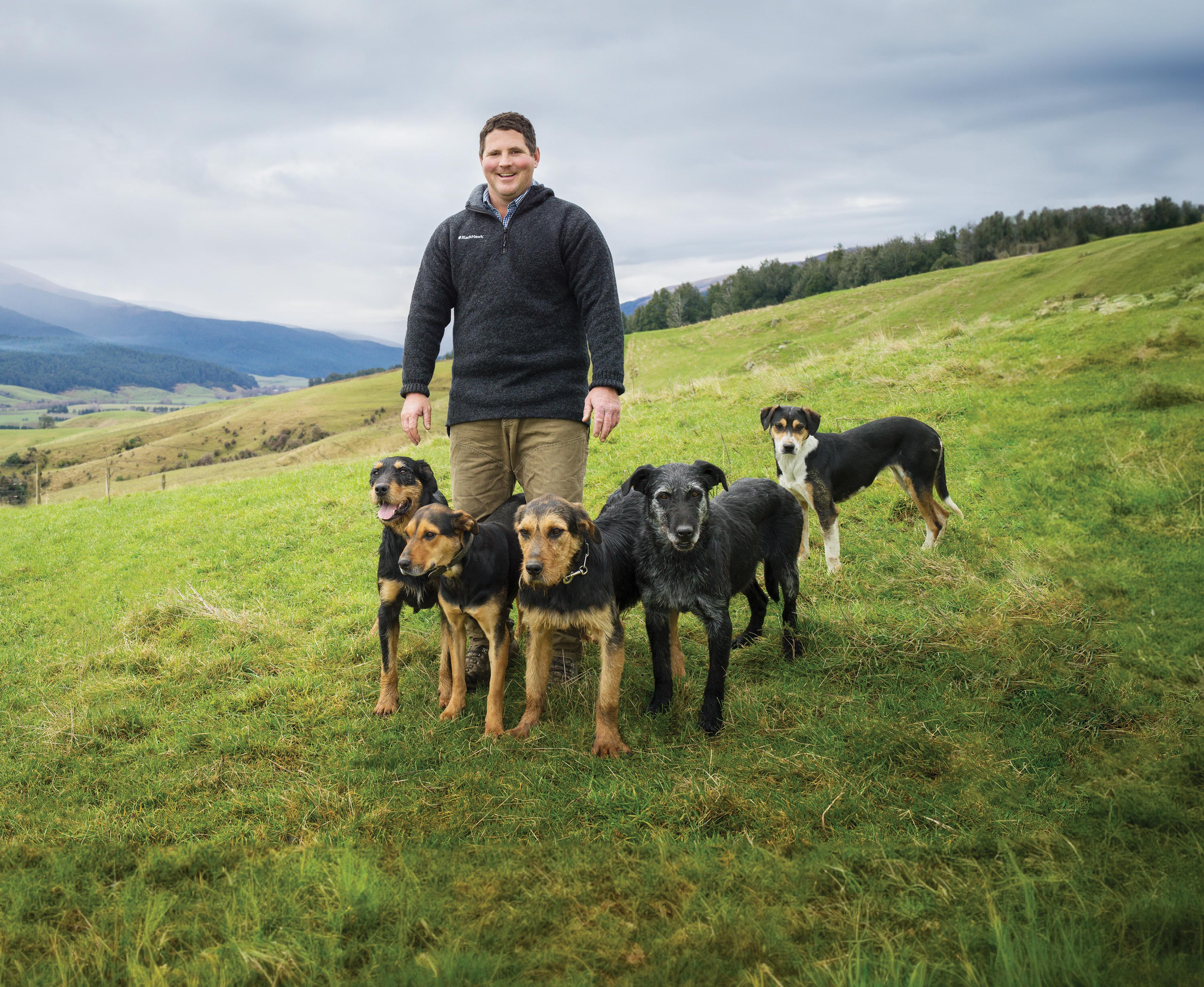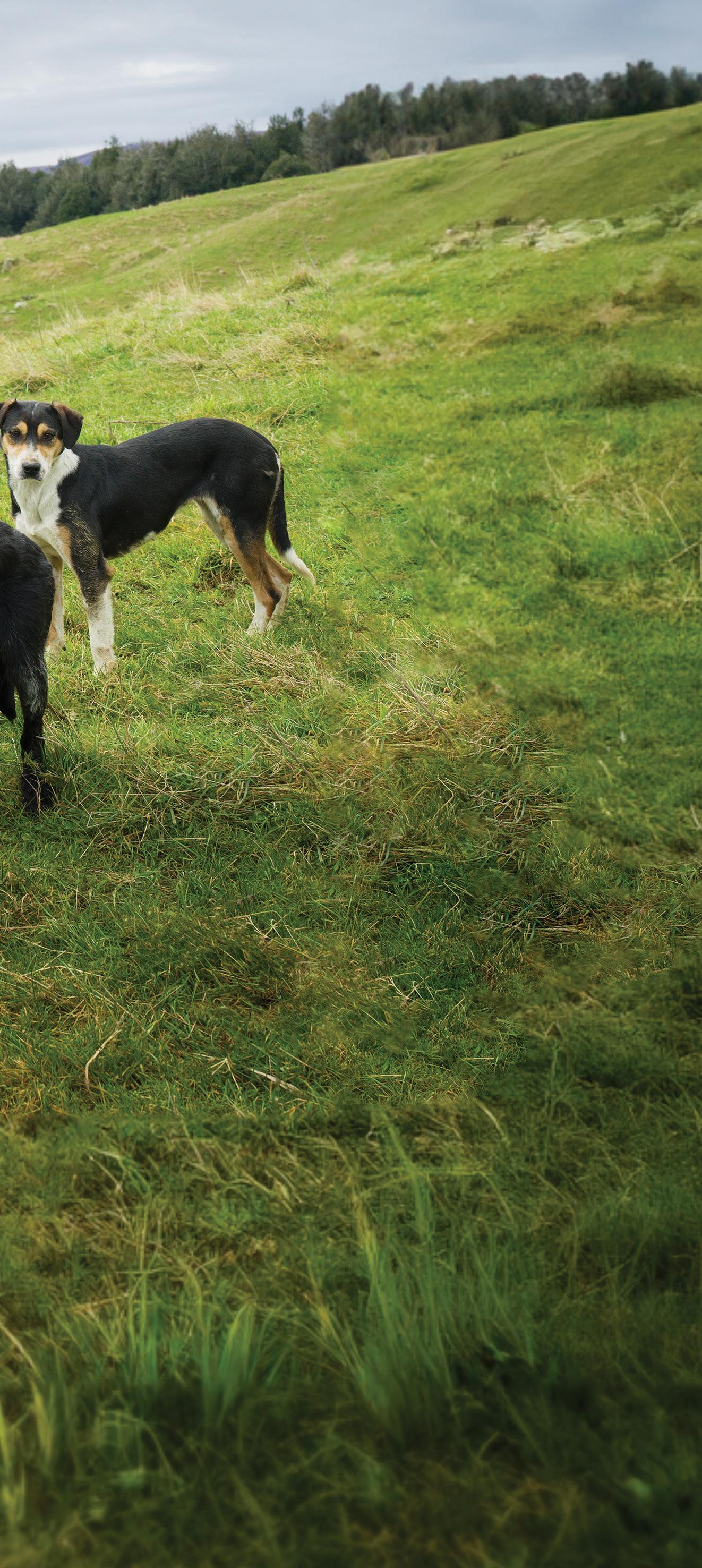Fourlegged assets
Your valuable working dog can suffer a range of health issues, vet Rachael Fouhy writes.
Working dogs are among the most valuable assets on our farms and they are many veterinarians’ favourite patients to treat. We see a range of common health issues in working dogs over summer, a selection of these are:
Heat Stress
On hot days some dogs will work themselves to a standstill, onfarm these dogs can sometimes appear to have a “fit”. This happens when a dog overheats. If this happens to your dog, cool them down as fast as possible – put them in a dam or trough ensuring their head stays above the water, and get them into the clinic as soon as possible.
Covering them in wet towels on the way to the clinic is helpful. At the clinic they need intensive fluid therapy to prevent internal organ damage. Most dogs make a complete recovery, however this is a very serious condition.
Constipation
This is common in older dogs who eat a diet of bones, in particular male dogs. Older male dogs are prone to constipation as they often have an enlarged prostate which can press on the rectum and narrow the space for faeces to pass through. Many dogs often have a form of arthritis in their tail which can affect their ability to squat and defecate. If you suspect your dog is
constipated, taking the dog for a run is the worst thing you can do. This does not stimulate them to poo, instead it dehydrates them more and can make the problem worse. Constipation can be a challenging condition and can have serious complications. In bitches, being constipated can also affect their ability to pee. Act promptly if you are concerned that your dog is constipated.
GDV/bloat/twisted gut
This is a life-threatening condition which can occur in Huntaway dogs. The cases we see are often after dogs have scavenged and eaten things they shouldn’t have such as horns, ear tags, possums, and placentas. They can also
“Do not feed large meals before a dog goes to work, but feeding a small handful of food before you let the dogs out for their morning can be very beneficial.”
occur after large meals containing a lot of bones. Eating these things can prevent the stomach from emptying, leading to the stomach filling with gas and fluid and twisting. If you suspect your dog has this condition, take them to the vet asap.
Lameness and injury
Due to the nature of their work, working dogs suffer a range of traumatic injuries, some more dramatic than others. These range from pad injuries to broken bones and significant ligament injuries. Some pad injuries can be prevented by products such as Pad Aid and gradually increasing dogs’ work loads (I appreciate this is easier said than done) or having booties available for dogs that are prone to injuries. Ligament injuries are fairly common and that can be difficult to deal with if not promptly identified. Some of these are obvious, for example, the dog suddenly goes lame, while others present as an on-and-off lameness. The trick is to get them diagnosed quickly. If these are left, the joint scars and this build up of scar tissue makes surgical repair more challenging.
Nutrition is a cornerstone of any working dog health programme. When considering what you feed your dogs it is important to look at the nutritional makeup of any food as
many of them vary greatly in terms of protein and fat – the two most important components.
It is important to consider how caloriedense different foods are, to ensure you are feeding your dog well enough. Some feeds are so bulky dogs are physically unable to eat the amount required to meet their nutritional requirements. For dogs that struggle to maintain weight during periods of high work, splitting their feeds and feeding a small amount of calorie-dense working food in the morning can be helpful.
Do not feed large meals before a dog goes to work, but feeding a small handful of food before you let the dogs out for their morning can be very beneficial. Kennel warmth is also really important to help dogs be in optimal condition.
Conditions such as arthritis and low body weight can be greatly improved by providing a warm kennel. This can be achieved by numerous options including:
• Insulated kennels
• Providing dogs with coats
• Warm bedding – either beds or wool or straw in the kennels
• Scraps of canvas can be used to create door flaps to help prevent draughts and keep warm air in.
Arthritis is a common condition we see in middle aged to older working dogs
and when proactively recognised and treated doesn’t have to be career-ending. Numerous products on the market can help with this including a variety of joint supplements, injectable products and foods.
Fleas can be a constant challenge. Fleas love to live in corners of kennels and can easily spread from one dog to another. There are a variety of flea treatments on offer, the best being Seresto collars which give up to eight months protection. If you have a flea infestation it is also important to clean the environment, including kennels and throw out any bedding.
A good vaccination programme is also important as unfortunately we still see parvo cases on a regular basis. The standard dog vaccine also includes protection against hepatitis, distemper, a respiratory virus, and parainfluenza. In addition we frequently see cases of kennel cough in working dogs and occasionally lepto. Kennel cough is highly contagious and lepto can be fatal. Protection against these diseases requires vaccination.
An excellent worming programme is also essential not only for individual dog health, but also for the protection of lambs from the effects of sheep measles.
Feeding more than 50 dogs every day is not only time-consuming but expensive. Sam Duncan, from Otairi Station in Rangitikei, says feeding the dogs had always been something that got him thinking.
with nutrition
A Rangitikei couple have formulated their own dog food roll to suit busy working dogs. Sarah Horrocks reports.
He and his four staff were feeding various types of food — rolls, biscuits, mutton and even rams.
“We fed whatever we could get at a decent price, but nothing was up to it nutritionally,” Sam says.
The nutritional punch wasn’t big enough to meet the demands of hardworking dogs and 600-800 grams of fat ram was the best source of energy he could find, which wasn’t nutritionally balanced or viable in the long term.
“When they’re by a horse these dogs
Left: Sarah Stevens and Sam Duncan developed their own dog food product to feed up to 50 dogs on Otairi Station, Hunterville.
Right: The dog roll contains lamb, beef, offal, fish oil, soy, minerals and honey. Below: A dog roll that was easy to feed saves time and the effort of swinging on an axe every night, meaning more family time for the Duncans.
are running 20–40km a day so they really need a lot of fat for energy as well as protein to promote muscle.”
The most important part of feeding dogs is nutrition from the right ingredients, so in 2020, utilising the skills of an animal nutritionist, Sam and his fiancée Sarah Stephens decided to start making their own, formulating a diet well suited to hard-working dogs.
Sam says they used every ingredient you can think of in the testing phase and had their fair share of failures along the way.
“We did a lot of trials with fats and the digestibility, and settled on mutton/lamb as the main ingredient.”
There is also beef fat and fish oil in the rolls. With high fat content, Sam and Sarah had to carefully balance protein levels using meats with the right amino acid profile for working dogs.
Also important was ease of feeding, as farmers don’t want to be swinging on an axe after a hard day’s work, every night of the week. So it had to be an easily fed roll.
Now branded Impact 4 Dogs, Sam and Sarah have put the idea into full-scale commercial production and invested just shy of $1 million in the business, which has a factory in Feilding.
The wider goal is to produce multiple products for various dog types, including pet dog rolls. Impact Vigour is the working dog roll and has 36% fat and 30% protein. The 3kg rolls are cooked to 70C to improve their shelf life and
reduce the number of preservatives needed. “The key ingredients are lamb, beef, offal, fish oil, soy, minerals and honey.”
A lot of working dog foods are low in protein and fat, with the remainder of the energy made up of grains and sugar. With sheep schedule prices tracking down, Sam says farmers are going to need to use the most cost-effective dog feed possible.
“Farmers need a product like this.”
The Duncans have encountered bump after bump in the road along the way. There have been long nights at the factory cleaning up fat at 3am and there is certainly no glamour involved.
“Closing the oven door on a tonne of product which subsequently explodes gets very messy.”
There’s not a lot of margin in the Vigour rolls, which will sell for $3.50/kg. The rolls are bundled into packs of six and sold directly to farmers.
Finding
When working dogs get too old to work the hills, or just don’t want to, they need a new home. Rebecca Greaves reports.
Man’s best friend can get a second chance at life, beyond retirement from the rigours of farm work, thanks to the team at Retired Working Dogs NZ Charitable Trust.
Working dogs are integral to life on farms, but what happens when they are ready for a slower pace of life, or if they simply aren’t interested in working? These dogs can make wonderful pets, or enjoy assisting on a smaller block as they head towards their twilight years.
For many farmers, when a dog that has provided many years of loyal service starts to slow down, it can be difficult to leave them behind. These dogs can go on to bring joy to a new owner, and enjoy the retirement they deserve.
Set up in 2012 by Natalie Smith, who was a vet nurse in the Tararua district at the time, the trust has been working hard to help our four-legged working dog friends, including hunting dogs, find loving forever homes ever since.
Since inception, the trust has placed 1549 dogs in new homes.
Most rehoming is done by advertising
on behalf of farmers. These dogs go straight from farm to their new homes, and farmers talk directly with potential owners to decide the best fit for their dog.
Natalie says many of the dogs the Trust is asked to re-home are not retired in the sense that they are old. A good proportion are young dogs that simply couldn’t, or didn’t want to, work. They make great pets, as even a ‘failed’ working dog knows basic commands and they generally have fantastic recall.
“Many of them have been outside dogs, but they soon adapt to living indoors and tend not to be hard to house-train. They love attention and cuddles and, as a rule, can be trusted around stock.
“Some of the dogs that we rehome come from large stations and are unable to keep up with the demands of a busy working life, but would suit a smaller farm or lifestyle block. Others are referred to us through vet clinics, after they have sustained career ending injuries. These latter dogs are taken into our foster programme, receive the surgeries and medical care they need, and are then re-homed.”
All the dogs that come through the foster service are vaccinated, microchipped, treated for fleas and worms, and (with the exception of the very young and very old), de-sexed.
The trust is a registered charity, which means donations qualify for a tax credit or a tax deduction.
i Do you have a dog looking for a new home or want to know more about the Retired Working Dogs NZ Charitable Trust? Find them at retiredworkingdogs.org.nz or email retired.workingdogs@gmail.com Farmers wanting to list a dog for adoption can visit this link: retiredworkingdogs.org.nz/submit-dog-adoption/
Head-to-head
The Wayleggo Cup will stay on New Zealand soil for the next 12 months at least.
The NZ Trans Tasman test team went head-to-head with the Australians to take the Purina Pro Plan Trans Tasman Dog Trial Test Series at the Ashburton A&P Show at the end of October.
The NZ team, sponsored by Elanco, were North Canterbury’s Captain Neil Evans with Tess and Ian Stevenson with Zac, Waikato’s Leo Jecentho with Tess, and Southland’s Brian Dickison with Jake. Reserve was Lloyd Smith, with Ted. Team manager and NZ judge was Pat Coogan.
The team, announced in May after the National Dog Trial Championships, went in as underdogs, a reflection of the Australians winning the cup in Tasmania last year. Despite this, the home side claimed the series by 84.5 points, winning by 65 points in the first test and 20 points in the second.
The test was conducted over a special course with its own rules, developed specifically for this challenge.
A mix of both Australian and NZ rules, it took place in the showgrounds’ main ring. The course consisted of four obstacles – a gap, a Maltese cross, a bridge and a pen. Australian rules applied as far as the gap, followed by a NZ drive through the Maltese cross and over the bridge, then back into an Australian carry to the pen.
In the NZ section, trialists drive the sheep with their dogs, so they work as one team. In the Australian carry section for a perfect run the competitor walks in a straight line and must not vary their
BY ANNABELLE LATZ
pace, keep the sheep within nine metres on their right-hand side and no more than nine metres in front or behind, and not crossing the line they are walking, otherwise the points come off.
Captain Neil Evans described the win as just brilliant, but it did not come easy.
“You had to be very clear in your own mind what you could do in each section.”
The course had to be completed in 15 minutes, one judge from each respective country, the scores were averaged.
Catching up with last year’s NZ captain Guy Peacock from Dannevirke, he said the lengthy course meant the dogs had to be able to sprint for 15 minutes, but also have enough gas in the tank to work the sheep. The longer course serves an
extra challenge on the body and the brain.
“It’s like a 400-metre runner who has to stop a few times to do a maths test,” he said.
The Romney hoggets were provided by Mark and Robyn Copeland of ‘Westmere’, Ashburton, who allowed both teams to practise on some of their sheep at their property prior to the test.
“Our dogs are more used to working with heavier, stronger sheep, the Australians are more used to Merinos,” Evans said.
It was Evans’ second time to wear the silver fern, first time as captain. Not getting over-awed by the occasion and staying in the moment was a key team message.
The NZ team photo from L-R: Pat Coogan (NZ Judge & Team Manager); Brian Dickison & Jake; Leo Jecentho & Tess; Ian Stevenson & Zac; Neil Evans (NZ Team Captain) & Tess.
Product name
Acana Sport & Agility Kibble FEDIAF Fresh chicken (20%), chicken meal (20%), whole red lentils
Acana Prairie Poultry
BlackHawk Working Dog Adult Formula
Champ Max Biscuits
Cobber Complete Puppy
Cobber Complete Puppy
Cobber Working Dog
Cobber Active Dog
Cobber Performance Dog
Cobber Senior Dog
CopRice Working Dog Adult Beef
CopRice Working Dog Adult Chicken
Kibble FEDIAF Fresh chicken (21%), chicken meal (20%), pearled barley
Kibble Approved Lamb meat meal, beef meat meal, oats
Biscuit Formulated Wheat, meal and bone derived from beef and lamb, animal fat
Kibble Approved
Kibble Approved
Kibble Approved
Kibble Approved
Meat and meat by-products (chicken, beef, lamb and/or pork), legumes, wholegrain barley N
Meat and meat by-products (chicken, beef, lamb and/or pork), legumes, wholegrain barley
Meat and meat by-products (chicken, beef, lamb and/or pork), legumes, wholegrain barley N
Meat and meat by-products (chicken, beef, lamb and/or pork) and fish and fish by-products, legumes, wholegrain barley
Kibble Approved Poultry and poultry by-product (including 5% chicken protein concentrate), legumes (beans and lupins), rice N
Kibble Approved
Kibble Formulated
Formulated
Meat and meat by-products (chicken, beef, lamb and/or pork) and fish and fish by-products, wholegrain wheat, wholegrain barley N
& chicken meat with by products, rice, cereals
meat with by products, rice, cereals
CopRice Working Dog Puppy Kibble Formulated Chicken & beef meat with by products, rice, cereals
CopRice Working Dog Senior
Formulated
meat with by products, rice, cereals
Eukanuba Premium Performance Sport 30/20 Kibble AAFCO/FEDIAF Dehydrated poultry protein, brewers rice, chicken fat, corn
Hills Science Diet Adult Active Kibble Formulated
Mix Frozen Concentrate
Mighty Mix Large Dog Formula
Nutrience Performance 30/20 Formula
Canin Energy 4800
Chunky Original
concentrate No
meats & products derived from meat (beef, mutton, pork)
TUX Energy Extra Kibble Approved Chicken and beef products and fats
Active Working Dog
Garlic & Rice
NOTES
• AAFCO status: Approved-has passed independent AAFCO testing, considered non-toxic, a complete and balanced diet. Formulated-good intent to meet AAFCO standards but not AAFCO tested.
• FEDIAF:- indicates the product complies with the European Federation of Pet Food Manufacturers’ (FEDIAF) standards. AAFCO standards.
• Ingredients are listed in order of proportion, highest listed first. Only first three are listed in this table. In general, where the first is a high-quality ingredient, the shorter the full list, the higher the food quality.
• Mighty Mix recommends feeding their frozen concentrate with Mighty Mix large dog formula, either together or alternately.
• All products listed are claimed to be complete and balanced diets
NOTES
• Content of fat, protein and other ingredients may be specific i.e 20%; or vague i.e at least 20% or up to 20%.
• Fat provides the energy for endurance work. Veterinary Enterprises Group (VetEnt) guidelines say hardworking farm dogs should have at least 20% animal fat.
• Good-quality protein is needed for repair and recovery. VetEnt’s recommends a minimum of 30% animal protein.
• Fibre is the indigestible carbohydrate portion and as a general rule should not be more than 10%.
• Carbohydrates are needed for sprint type energy.
• Energy: Farm dogs get most of their energy from fat. Energy may be quoted as “energy”, “gross energy”, “digestible energy” or the most relevant, “metabolisable energy (ME)” which is the energy available to the dog. Energy requirements should consider the intensity, frequency and duration of work.
• The consensus of most veterinarians is that a working dog’s diet should be based on high fat and protein and “low” or “low to moderate” carbohydrate.
• Nutritional data is presented on a drymatter basis.
NOTES
• A dog’s nutritional requirements vary with size, age, workload, reproductive status and climatic conditions.
• Daily rations quoted are those recommended by suppliers and may be based on different nutritional assumptions.
• Monitoring body condition is the best way to fine-tune ration sizes for a particular food.
• Farm dogs should ideally have a condition score of four on the Nestle Purina Body Condition System:
• Ribs easily palpable, with minimal fat covering.
• Waist easily noted, viewed from above.
• Abdominal tuck evident.
• Recommended retail prices from suppliers may vary from those seen at retailers, and bulk purchasing and specials reduce costs. Prices may vary from those in this table.
• Prices include GST.
PRICES CAN BE MISLEADING
• Different bag sizes make the price for each bag irrelevant. Price per kilogram also has little relevance because daily rations vary widely between products. The calculated cost for each dog per day must be balanced against food quality, which should be the major consideration for working dogs.
• For hard-working farm dogs, energy is an important factor in assessing rations. A 25kg dog has a resting energy requirement (RER) of about 820kcal per day. For dogs’ mustering, it’s more likely to be three to five times their RER, equating to about 2500kcal4000kcal.
• This is a wide range but then so is their workload. Knowing the ME of a specific food means a daily energy requirement (DER) can be used to determine the daily ration of a food needed to provide this energy.
• Daily ration (kg) = DER (kcal) / ME (kcal/kg)
• For example, the daily ration of 4000kcal/kg to provide 2500kcal: DER = 2500 / 4000 = 0.625kg or 625g.
Farm life is unpredictable
Cam Bain, West Otago, New Zealand
With the right food, you can rely on your dogs every day.
Cam Bain was born and raised on a sheep and beef farm. He knows only too well how uncertain farm life can be.
Black Hawk® Working Dog has been developed specifically for New Zealand working dogs. Packed with 32% real meat proteins and 22% high quality fats, the formula supports strong, lean muscles and provides sustainable energy throughout the day.
Since Cam has been feeding Black Hawk Working Dog to his dogs, he’s noticed a real difference - “When it comes to fuelling my working dogs, Black Hawk is the real deal. I’ve been feeding Black Hawk for about 2 years now, and there’s never any left in the bowls - they really enjoy it! They bounce out after a hard day’s work, and I can tell they’ve recovered faster. Their muscle tone is impressive, especially in my heading dog. Black Hawk speaks for itself; it’s worth a shot.”







